Last week I wrote about the Victorian home workout and the various attitudes about female exercise of the time. I included illustrations from exercise 19th century fitness manuals which showed women performing various exercises in their full proper dress of the time; corsets, petticoats, and all. Clothing had not yet evolved to a point where there was sportswear for women. When performing exercise a woman would have been dressed about the same for any other activity she would perform during the day. Horseback riding, however, had a completely different wardrobe. In this case, it would have been improper for a woman to perform the activity in her “everyday clothes.” In fact, Victorian riding habits weren’t even produced by dressmakers, but by expert tailors. And the ensemble itself gave women the opportunity to exercise bold expressions of their fierce side and equality or even dominance over men.
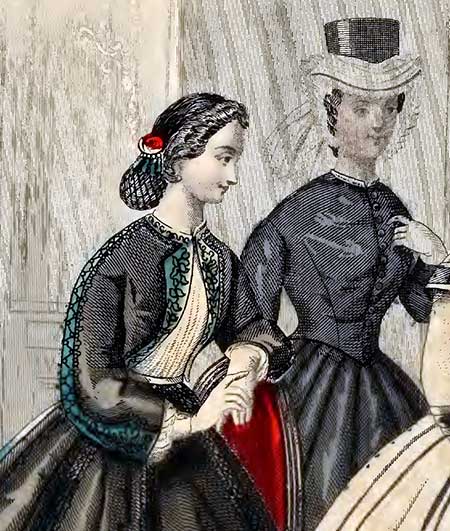
The Victorian riding habit is also a thrilling demonstration of artistry by the tailors of the time. Let’s take a look.
Improving female loveliness
While riding a bicycle became highly controversial in the early 1900s, horseback riding seems to have been widely accepted as a beneficial activity for women. Perhaps this was precisely because of the emphasis on the need for male supervision. And of course, when done for leisure and not for ambition. Says A Lady’s Guide to Perfect Gentility (1856):
“Riding on horseback is another useful as well as graceful means of exercise, too much neglected by young females. Though we cannot say that a professed female equestrian is exactly the female we should admire, yet we could wish to see imparted to our young ladies some portion of a similar enthusiasm for active sports. A canter for a few miles is a most admirable promoter of beauty and of health. The cheeks, the eyes, the lips and every feature of the fair equestrian, when she dismounts, possesses that fresh and sparkling grace which is one of the most important requisites in female loveliness..”
And 1959’s Beadles Dime Book of Practical Etiquette for Ladies and Gentlemen:
“The very delightful recreation and exercise of riding on horseback is too little partaken of in these days of fast locomotion. This is to be regretted, for nothing is better calculated to develop the physical health and animals spirits, nothing is more conducive to pleasure of a rational character, than to ride on horseback upon every pleasant day.”
Riding habits as an expression of equality
Have you ever noticed that the female Victorian riding habit is quite similar to the male from the waist up? Being on horseback was an opportunity for women to interact side by side with men in an activity that was highly skilled, especially considering what it took to ride side-saddle. The styles of appropriate clothing for horseback riding reflect the change in status that took place once a woman was atop a horse.
Trends in men’s riding habits were trends in women’s, including the popularity of the military-inspired coat of the late 1800s. They were often extremely similar considering that they were made by tailors (as opposed to dressmakers), and made of the same cuts and fabrics.
The 2002 Victorian Literature and Culture article, “Elegant Amazons: Victorian Riding Habits and the Fashionable Horsewoman” states that there was an expectation that proper ladies on horseback would rise to the occasion: “Though a Victorian woman was decorative in most other social contexts, on horseback she was instructed to shun ornament on both aesthetic and practical grounds
In the same way that punks and motorcycle gangs wear black leather to display their rebellion against the dominant culture, wearing a riding habit conferred a power that was not normally accorded to women in Victorian society, marking them as both potentially dangerous and capable of physical activity, if in a restrained sense.”
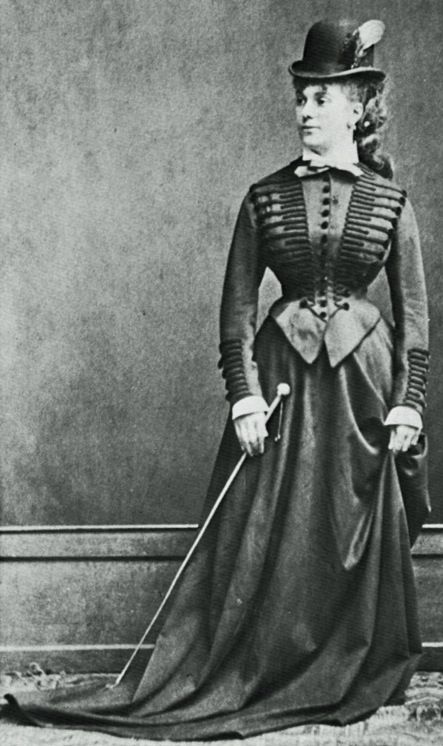
Never be in advance of the lady
Horseback riding was an area of upper-class culture that men were expected to both serve and respect a woman’s place and ability. Etiquette manuals of the time set the expectation that men should be punctual when meeting women for riding and should take care to ensure that their female companions be given the best horses for their size and sex. And no woman could be expected to mount a horse without a properly trained gentleman. Says A Lady’s Guide to Perfect Gentility:
“In riding, the gentleman’s first duty is to provide a gentle horse, properly caparisoned. After seeing that the girths are tight, be leads the lady to the horse. With her back to the horse, she takes hold of the horn of the saddle, and the reins with her right hand, and places her left foot upon the shoulder of the gentleman, who stoops before her, making a stirrup of his clasped hands. Raisin himself gently, the lady is placed in the saddle. The gentleman puts her foot in the stirrup, adjusts her dress, mounts his horse and takes his position, usually on the right, but authorities differ and may prefer the left.”
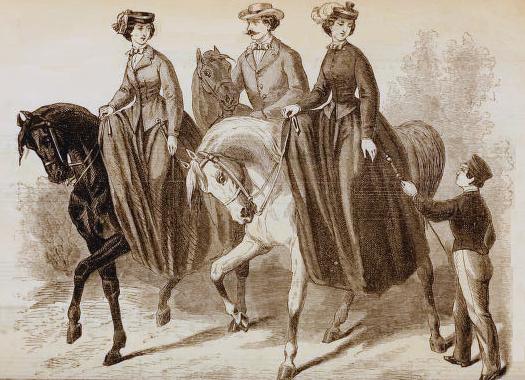
Horseback riding was no place to prove one’s ability as a man. Beadles Dime Book of Practical Etiquette for Ladies and Gentlemen reads:
“The gentleman should never be in advance of the lady, but always a little in the rear, yet constantly near enough for any emergency, or for a chat…It is, of course, the gentleman’s place to gallant the lady out, taking her by her left hand, as, with her right, she must support her skirt; he must assist her to mount by holding the stirrup for her foot, and by dispositng of her skirt after she is seated.”
Riding hats
The riding hats worn by women in the 19th century reflected the same masculine style as the rest of the Victorian riding habit. They were often in the top-hat style and nearly identical to their male counterparts, except perhaps for some fancier plumage. I loved how enthusiastic Beadles Dime Book of Practical Etiquette for Ladies and Gentlemen was on the selection of a great riding hat for women:
“Few ladies know how to dress for horse exercise, although there has been a great improvement, so far as taste has been concerned, of late years. As to the head-dress, it may be whatever is in fashion, provided it fits the head so as not to require continual adjustment, often needed when the hands would be better employed with the reins and whip. It should shade from the sun, and, if used in hunting, protect the nape of the neck from rain. The recent fashions of wearing the plumes or feathers of the ostrich, the cock the capercailzie, the pheasant, the peacock, and king-fisher, in the riding-hats of young ladies, in my humble opinion, are highly to be commended.”
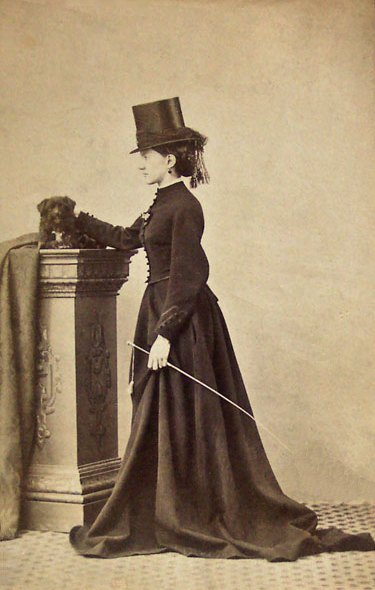
The tailoring genius of the apron skirt
The ongoing issue of a woman’s skirt and how to maneuver it during the entire act of horseback riding gave way to some brilliant tailoring. First, skirts were made 1-2 feet longer for a riding habit, and outfitted with hooks or buttons to tie the skirt up after the riding. The photos below from a gorgeous riding habit at the Victorian and Albert museum demonstrate how this was done.
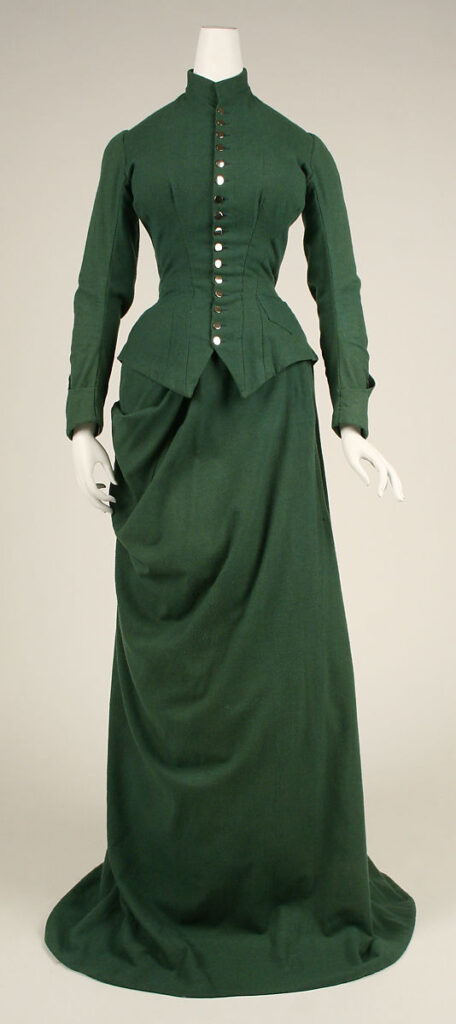
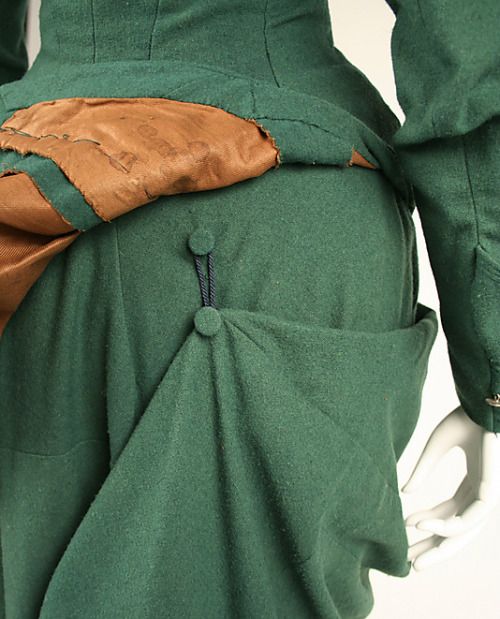
For even more ease, trousers were included with the ensemble, providing both coverage and comfort.
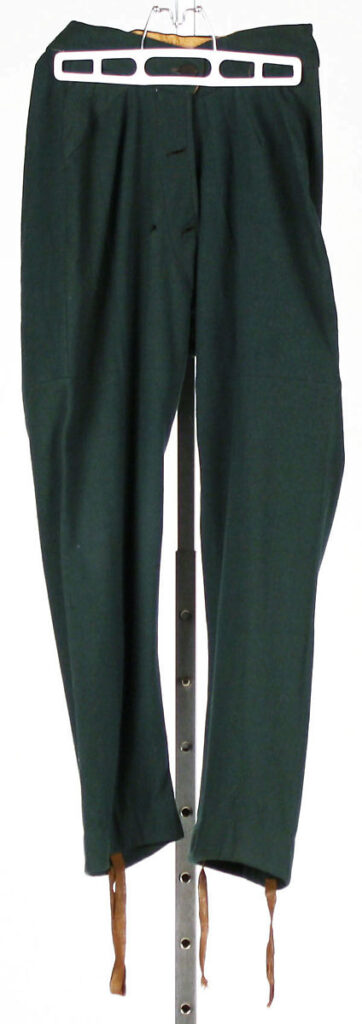
The late 1800s saw even more options with the emergence of the apron skirt, which was a faux skirt of sorts that a woman could undo before mounting a horse, allowing her much more flexibility to properly position herself while riding side-saddle, and thus much more safety. If you are at all familiar with the standards of modesty of the time, you may be surprised to see how exposing the apron skirt could be.
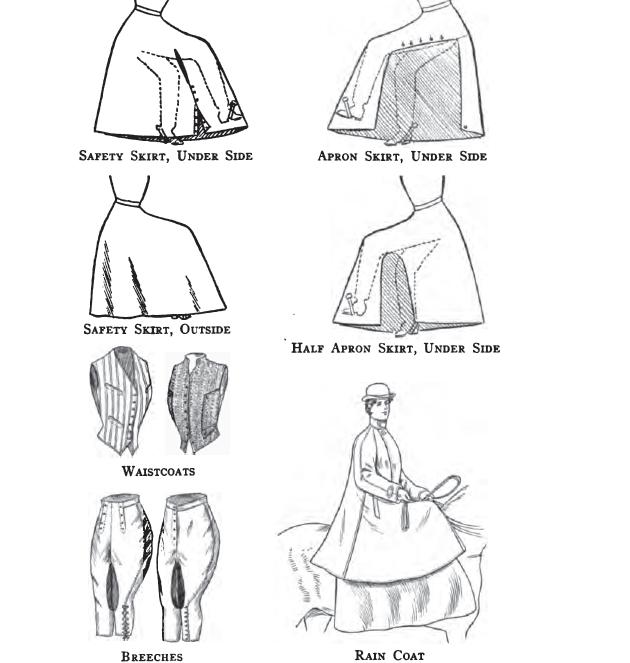
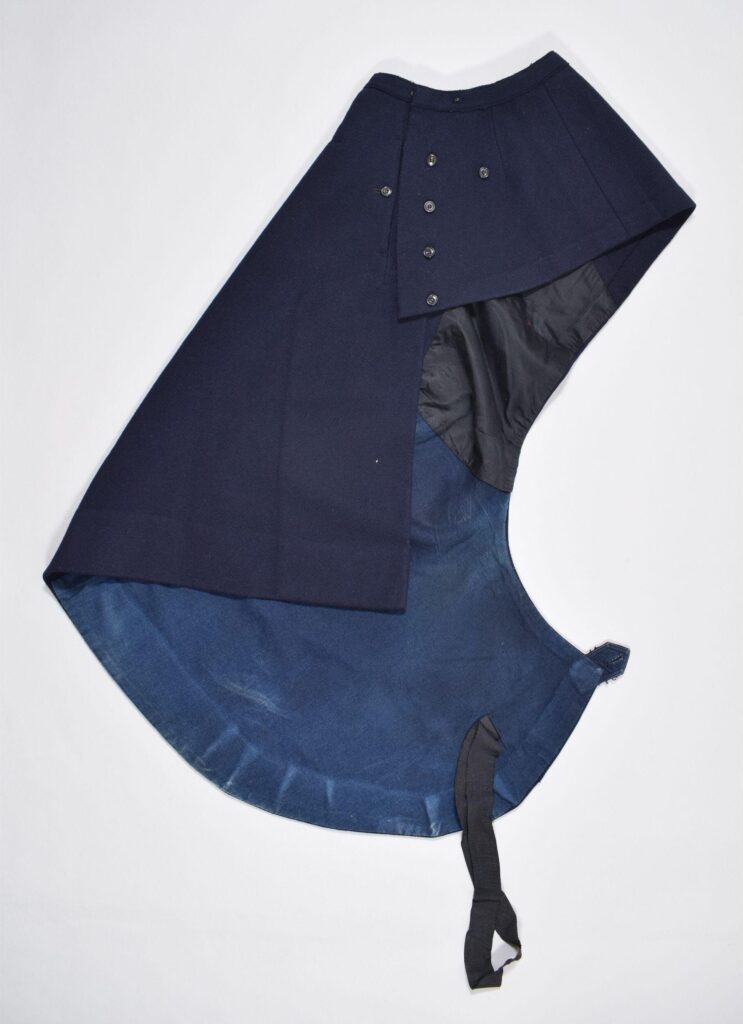
Who’s ready to go riding?
Learn more about the apron skirt and how it worked on this great video by English Heritage.
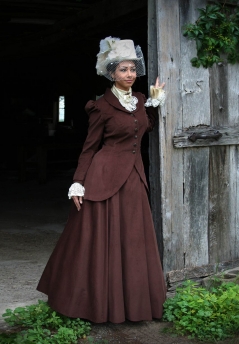

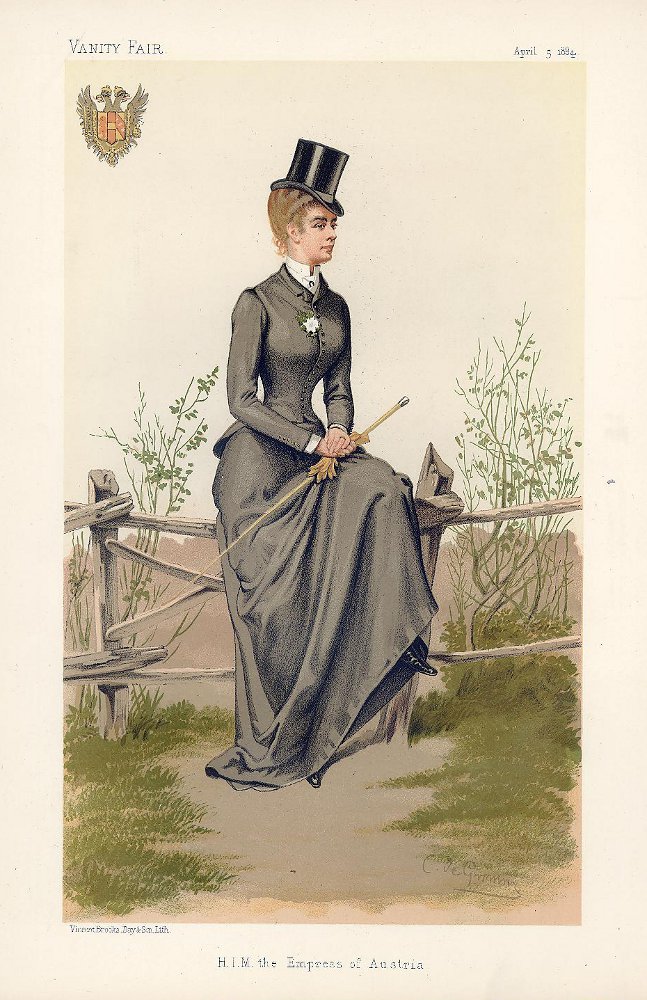
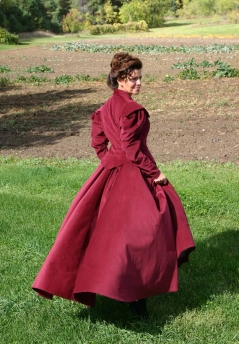
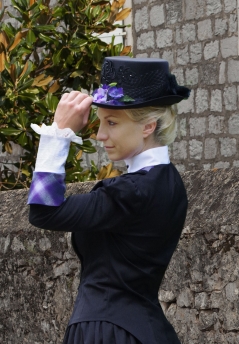












Thank you so much Marybeth! We are so glad to have you as a customer.
Great article. Once again you have done your homework in regard to women riding side saddle in previous time periods. Many of my side saddle sisters are quite talented and are able to make their own habits however I am not which is why Recollections is such a valuable resource for me